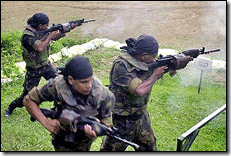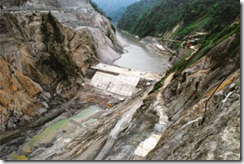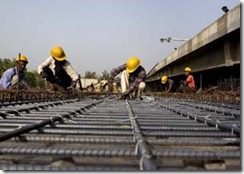By David Williamson
 David Cameron’s Indian tour has made clear he sees the economic superpower as an essential future market for Britain. But, writes David Williamson, Wales has already forged an exciting relationship with India through Bibles, Bollywood and the blasting furnace
David Cameron’s Indian tour has made clear he sees the economic superpower as an essential future market for Britain. But, writes David Williamson, Wales has already forged an exciting relationship with India through Bibles, Bollywood and the blasting furnace
IF YOU are hiking through the Khasi Hills in northeast India the area’s legendary rainfall may remind you of a wet day’s walking in Wales.
But true pangs of hiraeth will stir through you if the province’s regional anthem reaches your ears. It is a jaunty re-working of Hen Wlad fy Nhadau.
And if you are blessed with a clearly Welsh surname you are guaranteed a welcome to rival that found in our most gregarious valleys.
The bond of Welsh-Indian friendship was forged by generations of Welsh missionaries who lived in the Khasi Hills from 1841 to 1966.
They founded schools, bringing education to women, and developed a written script for the local language which has unleashed a vibrant culture of poetry.
Thomas Jones, a graduate of the Calvinistic Methodist College at Bala, is now celebrated as the “Father of Khasi Alphabets”. Commemorations to mark the anniversary of his death drew reported crowds of 250,000.
Indian corporations today have the potential to have almost as defining a role on the lives of Welsh communities as the early generations of colonialists and missionaries.
The Corus steelworks in Port Talbot – a blazing icon of what remains of Wales’ industrial heritage – is owned by the Tata Steel empire.
Corus had initially accepted a £4.3bn offer which was trumped by Brazil’s CSN. Tata blew this bid out of the water and bought the Anglo-Dutch steel giant for more than £6bn.
The chutzpah of the deal demonstrated the new confidence which buzzes through India and fuels the international ambition of its brightest entrepreneurs.
This energy, which pulses through a land where dire poverty is found alongside extraordinary wealth, also fascinated Bangor University English and drama graduate Danny Boyle. His Slumdog Millionaire film was a box office hit and triumphed at the Golden Globes and the Oscars.
The success of the AR Rahman soundtrack demonstrated India’s growing cultural power alongside its industrial might.
Wales is already on the radar of India’s mighty Bollywood film industry.
Mayur Verma, who has starred in scores of musical epics, moved his family to Dolgellau in 2007 and praised the location as somewhere to “satisfy my creative appetite”.
Bollywood films have been shot at locations including Caerphilly Castle, Conwy Suspension Bridge and Llanberis.
The country has become a source of home grown productions, albeit with a uniquely Welsh twist.
In 2006, Indian-born Nikhil Kaushik, a consultant ophthalmologist at the Wrexham Maelor Hospital, decided to use his bonus to finance a musical love story featuring two young medical students.
He explained at the time: “Some people thought I was mad and that includes some of my very close family. The bonus was additional income so it was an argument between me and my wife – she wanted an extension to the house.”
Rather than hire professional actors he persuaded real-life health professionals to star in Bhavishya – The Future.
The colossal contribution of Indian doctors to the Welsh NHS is only matched by the escalating value of the country as a buyer of Welsh goods. Exports from Wales to India have jumped from £26m in 1996 to £80m in 2009. This barely scratches the surface of the potential of trade relations.
Bangor University’s Centre for Advanced Research in International Agricultural Development has forged hi-tech collaborations with Indian peers in an EU-funded project to “improve food security through research on the under-utilised grain legume rice bean”.
It is this blend of shared knowledge, fused cultures, dynamic trade and, most importantly, continent-crossing friendships which will ensure Wales and India grow closer together as the 21st century unfolds.
Students from India have flocked to Welsh universities to study subjects such as medicine and engineering. In 2008-09 there were 3,005 enrolled at the nation’s institutions.
In the coming years aspiring business executives from Wales will strive to learn Hindi and take part in exchanges with colleges on the sub-continent.
Despite the horrendous poverty which still blights the lives of so many in India, enduring corruption and the rumbling threat of terrorism, it is hard not to marvel at India’s success in maintaining its status as the world’s largest democracy. With a population of 1.2 billion and more than 20 recognised languages and faiths, it seems a miracle the country has responded to adversity with reinvention, not disintegration.
At a time when many Western countries are struggling with the challenges of pluralism and emerging economies are opting for state autocracy rather than messy democracy, India may provide an essential role model for how tolerance, freedom and growth can co-exist.
Thomas Jones jumped into this melting pot when he left Bala for India in the 19th century and the country’s readiness to take the best of other cultures is demonstrated in the reported popularity of scones and Welsh lacework in the Khasi Hills. Poet Nigel Jenkins’ study of Wales’ links with this area, Gwalia In Khasi, won the Arts Council of Wales Book Of The Year award in 1995.
In sharp contrast with Wales, Presbyterianism is thriving in this corner of India. The city of Shillong is now home to the Thomas Jones School of Mission & Evangelism.
Reports of the 1904 religious revival which swept Wales and resulted in an estimated 100,000 conversions reached the Welsh-planted congregations who prayed for similar events in India – two years later 8,000 people had joined the Indian churches.
And in 1910, 24-year-old Watkin Roberts, whose life had been transformed in the Welsh revival, went as a missionary to the Hmar people, also in northeast India. The British saw the Hmar as notorious headhunters and Roberts enjoyed little initial success but within two generations thousands had embraced his message.
One of the few early converts was a man named Chawnga. His son, Rochunga Pudaite, came to Wales on the 100th anniversary of the Welsh revival to thank the nation for Roberts’ work.
Since 1971 he has had the dream of giving a free copy of the New Testament to all the families of the world, and more than 16 million have now been distributed through his charity.
The secularisation of Wales is reportedly a concern to churchgoers in both the Hmar and Khasi hills. It is possible, in coming decades, missionary fervor will propel Indian preachers to communities which Jones and Roberts once called home.
Just as British colonial rule in India shaped the nation, the country’s economic might, creative and spiritual energy will run through Europe in the rest of this century.
In December Welsh business people will go on a trade mission. But their aim is not to bring solutions to Indian problems. Rather, they hope to make crucial contacts, discover new technologies and strike glittering deals. Britain – and Wales – cannot dominate India in the years ahead but there is every chance for a partnership driven by respect and adventure.
via Walesonline
 Agartala, Aug 1 : Tripura State Rifles (TSR) troopers, specialised in combat actions, will help in providing security during the Commonwealth Games in New Delhi following a request from the union home ministry, a top official said here Sunday.
Agartala, Aug 1 : Tripura State Rifles (TSR) troopers, specialised in combat actions, will help in providing security during the Commonwealth Games in New Delhi following a request from the union home ministry, a top official said here Sunday.






 Nehwal allows her coach the total freedom to shape her career
Nehwal allows her coach the total freedom to shape her career Nehwal is set to cross the $2m mark per endorsement, say brand experts
Nehwal is set to cross the $2m mark per endorsement, say brand experts














